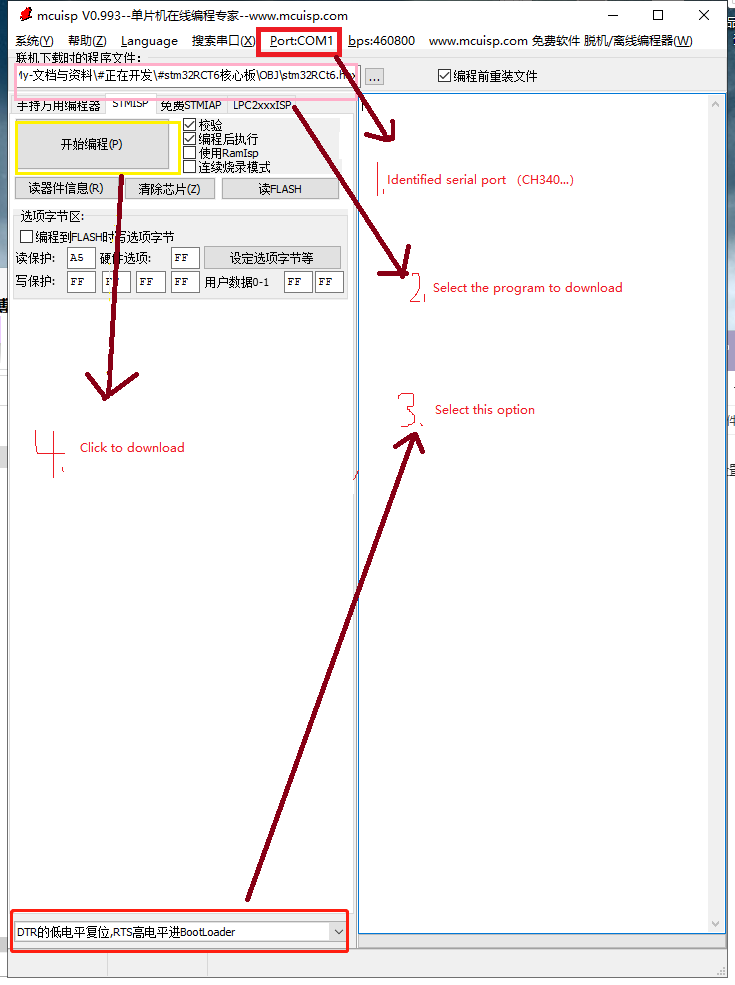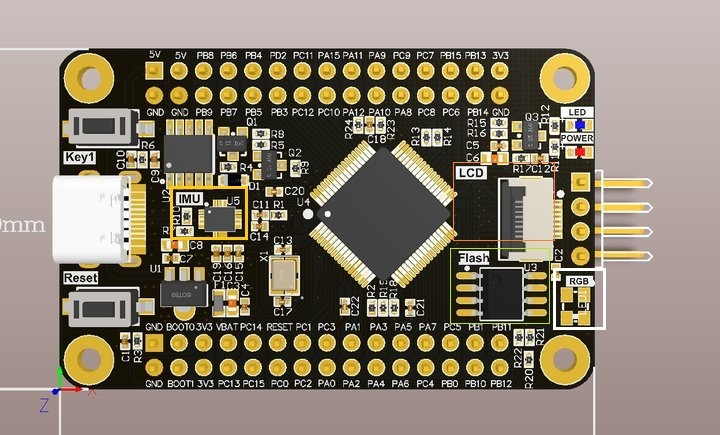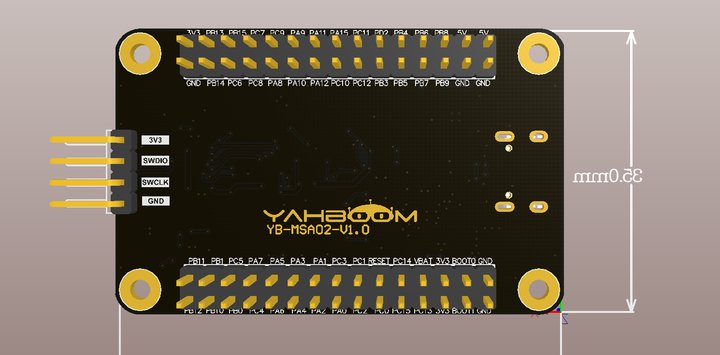Basic introduction of stm32RCT6 core board
Basic introduction of stm32RCT6 core board1.Preliminary understanding of STM322.Introduction to STM32F103RCT6 of this product2.1 STM32F103RCT6 AND STM32F103C8T6 compare2.2 Features of this product2.3 ISP Method of Write2.4 SWD Method of Write3.STM32F103RCT6 Physical picture:4.STM32F103RCT6 Basic peripherals
1.Preliminary understanding of STM32
STM32 is: Cortex-M is used as the core and packaged together with some peripherals to become a popular 32-bit embedded processor. STM32F1, namely M3 core, is used in development. Cortex-M3 adopts ARMv7-M architecture. The ARM architecture was designed by the UK ARM company.
So what is the connection between Italian and French semiconductors, ARM and merchants? ARM company has proposed an architecture, and Italian French Semiconductor has designed STM32 chip through the architecture provided by ARM, and these businesses have purchased STM32 chip of Italian French Semiconductor to carry out independent secondary development, and connected with some peripherals to make STM32 development board and single chip products we have.
- ST:Italian French Semiconductor is the name of a company.
- M:Acronym for Microelectronics, which means microcontroller. Pay attention to the difference between microcontroller and microprocessor
- 32:32bit means that this is a 32bit.
2.Introduction to STM32F103RCT6 of this product
2.1 STM32F103RCT6 AND STM32F103C8T6 compare
Both are STM32 chips, but RCT6 has much more pin and flash capacity than C8T6.
- RCT6 has 64 pins, while C8T6 has only 48, which means more peripherals can be accessed. For example, RCT6 can drive four motors with encoders, while C8T6 can only drive three motors with encoders.
- The flash of RCT6 is 256k, the SRAM (memory) is 48k, and the C8T6 is only 64k, which means that more variables before power failure can be recovered, so that the machine can recover to the operation before power failure.
2.2 Features of this product
- With a 160 * 80 TFT color screen, it is convenient to debug and realize the function of independent thinking.
- The RGB light with seven colors can display some module exception information in different colors.
- With an 8M external flash, it can store more information for external expansion.
- With a 6-axis IMU, it can detect the angular velocity and linear velocity of the board in real time.
- There are two ways to download the program: ISP mode and SWD mode. ISP mode can be downloaded only by connecting the USB and typec data cable. The biggest advantage of SWD mode over ISP mode is that it can be debugged online.
- Lead out all pins for DIY
2.3 ISP Method of Write

2.4 SWD Method of Write
Refer to this tutorial:https://zhuanlan.zhihu.com/p/342582220
3.STM32F103RCT6 Physical picture:


4.STM32F103RCT6 Basic peripherals
| Basic peripherals | Number | explain |
|---|---|---|
| I2C | 2 | NONE |
| I2S | 2 | NONE |
| SPI | 2 | NONE |
| CAN | 1 | NONE |
| UART | 2 | NONE |
| USB | 1 | The outgoing pins need to be connected by themselves |
| SDIO | 1 | The outgoing pins need to be connected by themselves |
| TIMER | 8 | 16-bit timer (2 basic, 4 general, 2 advanced) |
| DMA | 2 | 12 channels in total |
| PWM | 30 | One general timer can generate 4 PWM, and one advanced timer can generate 7 PWM, that is, 16+14=30 |
| DAC | 2 | 12-bit resolution |
| ADC | 3 | 12-bit resolution (Each has 16 channels) |
| Base GPIO | 51 | NONE |